
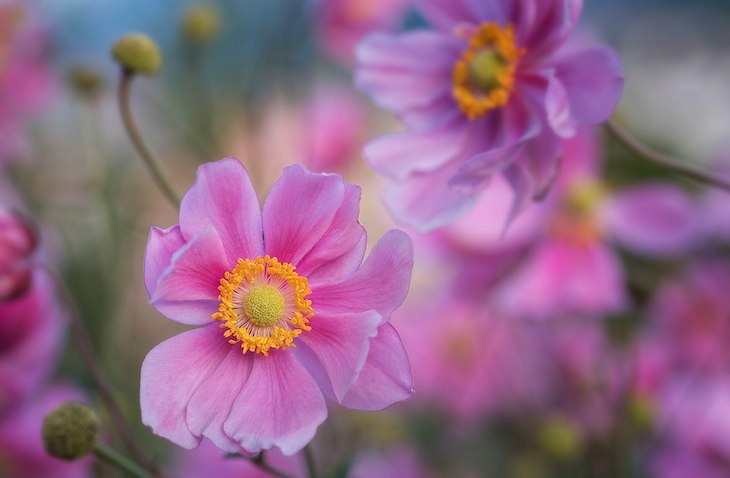
Image Source: Wikimedia Commons
You may know the anemone as ‘windflower’. The simplest explanation is that the word Anemone derives from the Greek word Anemoi, meaning wind. But why is this flower associated with the wind? Well, it’s said that the brightly colored petals of anemones only open when the wind blows.
In Greek mythology, Anemona was a beautiful nymph whose name literally means ‘daughter of the wind’. As the story goes, the wind god Zephyr and Anemona fell in love, but when his wife Chloris (or Flora) found out, she banished the nymph and turned her into a (beautiful) flower.
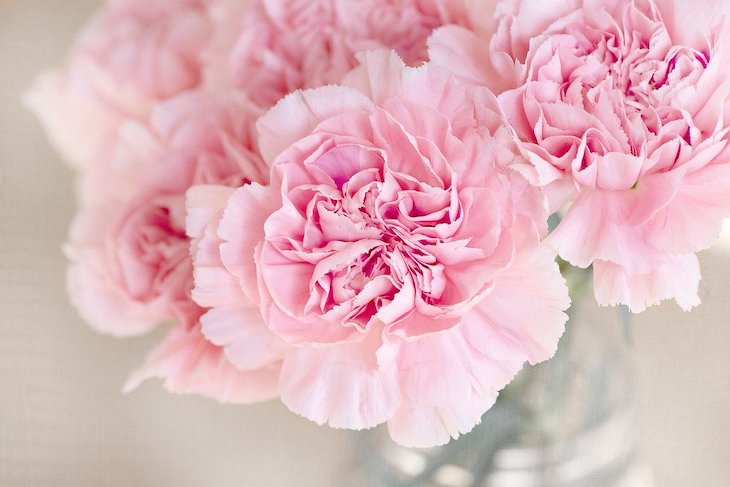
As with many other flower names, there are two possible etymologies for carnations. According to one, the word carnation may be a corruption of the word coronation, after the flower’s toothed petals which resemble a crown, or because the flowers were worn, crown-like, as garlands.
The second etymology focuses on the flower’s pink color and roots the word carnation in the Middle French word for pink complexion.
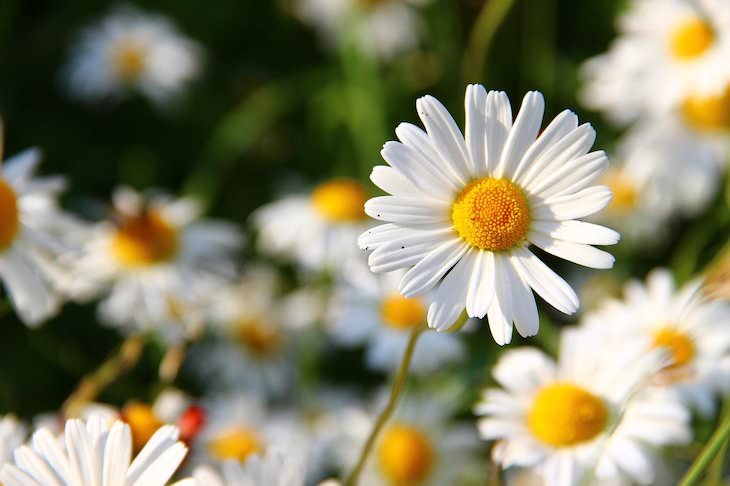
The word daisy is deeply rooted in the English language. It derives from the Old English word dægesege, meaning “day’s eye” because the petals of some species of daisy open at dawn and close at dusk. Like the eye of the day, daisies sleep and wake. For the same reason, a common term for daisy in Latin is Solis oculus, meaning “sun’s eye”.
Related: The Symbolism of Common Flowers
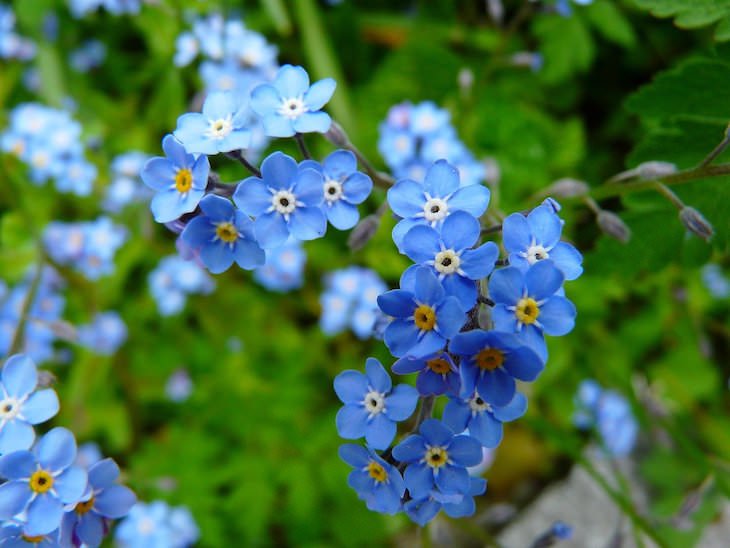
The name 'forget-me-not' is a direct translation from the old French ne m'oubliez mye. Renaissance romantics believed that if they wore the soft-colored flowers they would never be forgotten by their lovers, thus making forget-me-nots a symbol of everlasting love.
Other languages have their own translation of ne m’oubliez mye: In German, this flower is called Vergissmeinnicht, in Czech nezabudka, and in Swedish it’s called förgätmigej.

The etymology of the name ‘Lupines’ is quite surprising. The word derives from the lupinus, the Latin adjective for wolf. But what do the colorful tapering clusters of lupines have to do with the fierce animal? Perhaps it’s because the flowers were once believed to devour soil nutrients like a wolf. This is likely folk etymology, as lupines actually enrich the soil on which they grow, and have long been harvested for their nutritious seeds.
Related: 10 Everyday Words With Surprising Etymologies
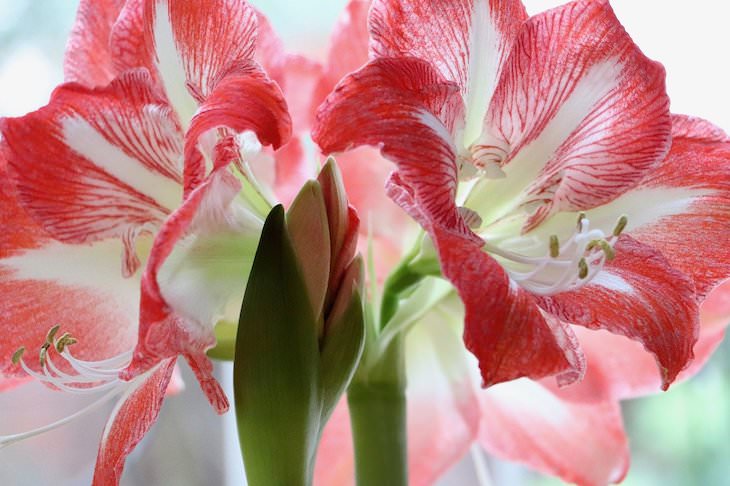
In the pastoral poems of Theocritus, Ovid, and Virgil, Amaryllis was a common name for a beautiful country girl. The word Amaryllis may derive from the Greek verb ‘to sparkle’ or ‘to shine'.
In the late 1700s, the Swedish botanist Carl Linnaeus (often referred to as ‘the father of modern taxonomy') adopted the name amaryllis for this flower family. The name seems to be a good fit because of the rich red vines which shine in contrast to the white petals of amaryllis flowers.

Image Source: Wikimedia Commons
Peonies date back to approximately 1000 BC in the gardens of China and by the eighth century, they had reached Japan. It wasn’t until 1789 that the first tree peony came to Europe. In the Eastern world, peonies were mainly used for their medicinal properties. The root and seed of the flower were used to treat headaches and asthma and to relieve pain associated with childbirth.
Those healing powers are likely what gave the flower its name. Peony derives from Paion, the name of the physician of the gods in Greek mythology. The name Paion itself comes from a root Greek verb meaning ‘one who heals’.

Despite the strong connection between tulips and Holland, the word tulip, like the flower itself, has Turkish origins. In the 1500s the Ottoman Turks discovered the colorful flowers in the mountains of India and Nepal. Once they brought them back, tulips became a symbol of the wealth and decadence of the Ottoman Empire. They dubbed the flower tülbent, a word which is based on the Persian word dulband and means turban.
As you probably guessed the flower got its name from the petals’ resemblance to the folds in the headwear worn throughout the Middle East, India, and parts of Africa.
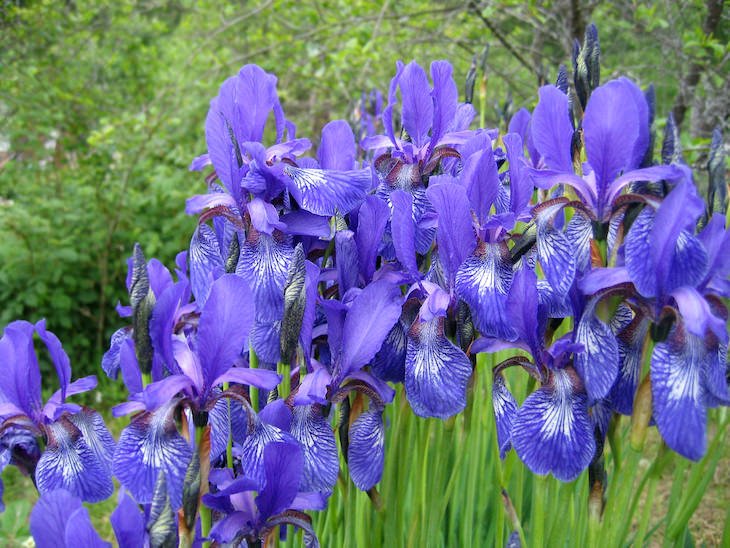
Yet again, we have Greek mythology to thank for the name iris. The beautiful flower is named after Iris, the goddess of the rainbow. According to the myth, Iris was the messenger of the gods and the rainbow was the bridge between heaven and earth. That’s why when you gift someone irises, it means that you have a message for them.
Related: Flowers: Their Meanings and Symbols
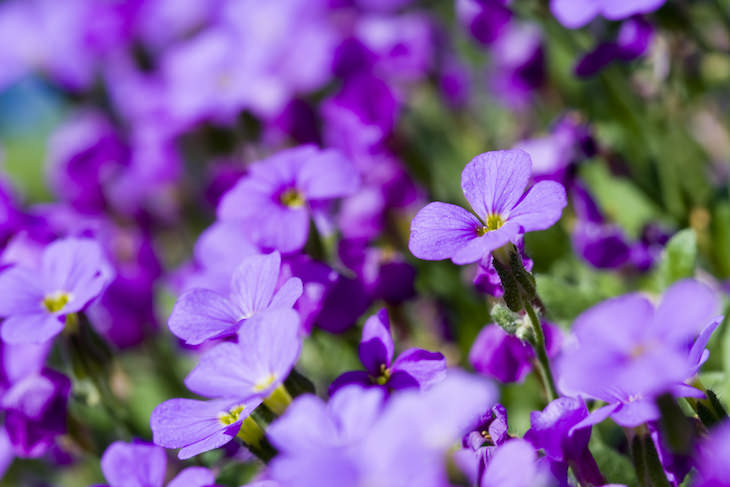
The first use of ‘violet’ as a flower name was recorded circa 1300, some decades before the same word became synonymous with the flower’s distinctive purple hue. Violet derives from the French word violette, which in turn comes from the Latin viola. So why did the Latins call this plant viola? The answer isn’t clear. What we do know for sure that this viola has no etymological relation to the instrument.
Some scholars believe Latin got 'viola' from the Greek name for the plant ion, which interestingly, also has no etymological connection to the molecule.

For thousands of years, Europe and the Middle East have had a complex relationship with the beautiful but deadly poppies. These innocuous flowers can produce a milky juice that contains powerful narcotic substances, such as morphine, opium, and codeine. The name poppy comes from the scientific term of the species - papaver somniferum.
The word papaver, or ‘pappa’, is Latin for food or milk. Yet again, it was Carl Linnaeus, who gave the specimen its current name.
Share this article with those who love flowers!